
NOTE: Brake pipe fastening nuts are usually very tightly tightened; when you try to unscrew them with an ordinary wrench, the edges of the nuts are crushed. Therefore, we recommend using special wrenches for brake pipes.
1. Disconnect a wire from the minus plug of the storage battery.

2. Remove the decorative engine cover (see Removal and installation of a decorative casing of the engine).
3. Remove the air filter (refer to Removing and installing the air filter and intake silencer).

4. Remove the reservoir cap and pump out the brake fluid from the reservoir, for example, with a large medical syringe.
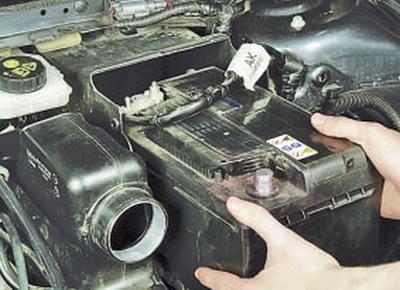
5. Remove the battery (see Removing and installing the battery) …

6.... and a shelf for its fastening along with an intake silencer (refer to Removing and Installing the Battery Shelf).
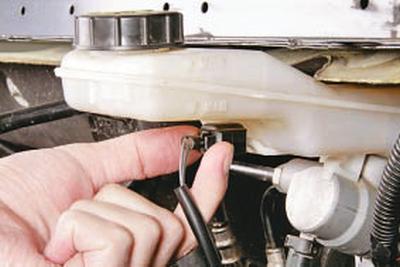
7. Press the clamp of the brake fluid level sensor wiring harness block..
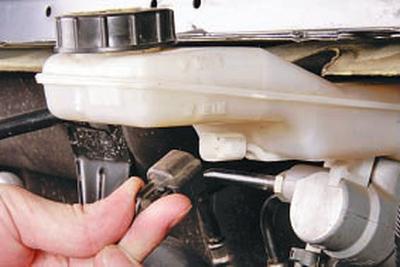
8.... and disconnect the block from the sensor.
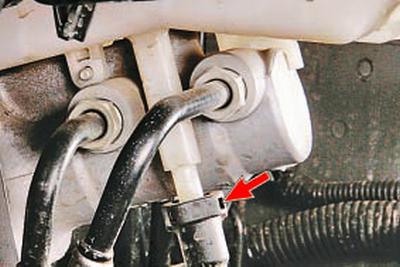
9. On a vehicle with a manual transmission, squeeze the clamps on the hose end (shown in the photo with an arrow) to the clutch master cylinder and disconnect the hose from the brake master cylinder reservoir.
USEFUL ADVICE: Immediately after disconnecting the hose from the tank, plug its hole without lowering the hose down. In this case, a little working fluid will remain in the hose, therefore, after installing the reservoir and connecting the hose to it, it will not be necessary to remove air from the clutch release hydraulic drive.
Install a stopper on the tank to prevent dirt from entering it.
NOTE: On a vehicle with an automatic transmission, the master cylinder reservoir fitting has a spring loaded plug instead of the hose end. There is no need to remove it unless necessary.
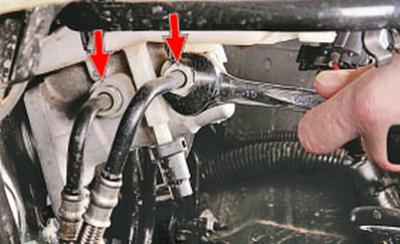
10. Turn away nuts of fastening of two pipelines to the main brake cylinder and take away pipelines aside.
GOOD ADVICE: Shut off the pipelines in any way possible (for example, by putting protective caps on the ends of the valves to release air), to prevent leakage of brake fluid.

11. Turn off two nuts of fastening of the main brake cylinder to the vacuum amplifier …

12.... and remove the master brake cylinder assembly with the reservoir.
13. If there is no reservoir on the new master brake cylinder or if it becomes necessary to replace the rubber connecting sleeves of the reservoir, remove the reservoir from the old cylinder (refer to Brake Master Cylinder Reservoir Replacement) and install it on the new cylinder.
14. If during operation there was a leak of brake fluid through the connecting bushings, remove the bushings from the openings of the cylinder body.
WARNING: The connecting sleeves must not be reused, replace them with new ones.

15. Using a screwdriver, remove the rubber o-ring from the main brake cylinder housing.
WARNING: Replace the sealing ring of the master cylinder with a new one each time the connection is disassembled.
16. Install the brake master cylinder and all removed parts in the reverse order of removal, fill in brake fluid and bleed air from the system (see Bleeding the hydraulic brake system).
Visitor comments